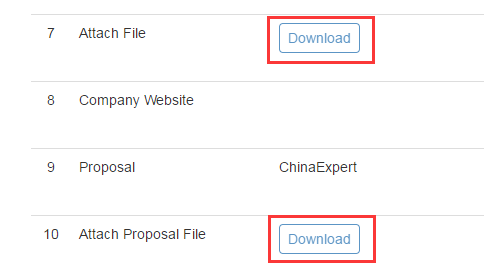[BUGCASE]CI框架的post方法对url做了防xss攻击的处理引发的文件编码错误
一、问题描述
出现问题的链接:
http://adm.apply.wechat.com/admin/index.php/order/detail?country=others&st=1&order_id=59de1481875cb2430
进入以上页面,点击"Download"按钮

页面报错,没法下载

二、问题分析
1.初步分析
通过查看相关代码可以了解到文件下载的过程如下:
- 取到下载链接中的mid参数
- 对mid先后进行url解码和base64解码
- 将解码后的字符串按"|"进行分隔
- 判断得到的数组是否存在第二个元素,不存在会返回404,存在则会利用分隔得到的两个值进行下载
其中分隔得到的两个值分别是mid和filename
报错下载链接:
http://adm.apply.wechat.com/admin/index.php/updown/download_file/?mid=YjBhNDZlNDVhMjk+MGY1ZTFjYTE4ZjI0MDYwNDMyMWN80JjQn1%2FQlNCy0L7RgNC90LjQul%2FQ
mid:
YjBhNDZlNDVhMjk+MGY1ZTFjYTE4ZjI0MDYwNDMyMWN80JjQn1%2FQlNCy0L7RgNC90LjQul%2FQ
对报错链接进行上述步骤,发现解码后的字符是一堆乱码,并不包含"|":
url解码:
YjBhNDZlNDVhMjk MGY1ZTFjYTE4ZjI0MDYwNDMyMWN80JjQn1/QlNCy0L7RgNC90LjQul/Q
base64解码:
b0a46e45a29
YLX،N
̌Xߴ&4'״%4,/`4/t.4.
因此报错,无法下载
为什么其他用户上传的文件可以下载,这个却不能下载?
这是一个什么文件?下载链接中的mid为什么会错?
2.报错的文件是什么
要找到用户上传的文件,需要收集一些信息
OA注册邮箱:XXX@gmail.com
申请时间:2017-10-11
注册IP:XX.XX.XX.XX
查看2017.10.11的日志发现用户上传的文件目录:
"\/data\/XXX\/upload_files\/\u0418\u041f_\u0414\u0432\u043e\u0440\u043d\u0438\u043a_\u0420\u0435\u043a\u0432\u0438\u0437\u0438\u0442\u044b.docx"
文件名经过unicode编码,转码之后:
ИП_Дворник_Реквизиты.docx
还有一个是一样的文件:
ИП_Дворник_Реквизиты1.docx
果然是很奇葩的文件名
这个文件名是怎么编码成mid的呢?
为什么mid会错?
3.mid为什么会错
通过分析,了解到mid的值来自mongodb数据库中的company_attach和proposal_attach两个字段,也就是说mid在存入数据库时出错
这时需要了解下mid是怎么存入数据库的
用同样的两个文件,重新申请一个OA,在上传(updown/upload_file)的时候会对文件名做处理,具体过程:
- 将得到的mid和filename用"|"拼接起来
- 对拼接得到的字符串做一次base64编码
- 在对base64编码后的字符串做一次url编码
在最后一步提交(register2/do_apply)时会操作数据库
通过分析日志发现,在执行insert之前,这两个字段就已经是错误的
取值方式是:
$this->input->post('company_attach', TRUE);
$this->input->post('proposal_attach', TRUE);
在调用do_apply接口时,打开Chrome的Network观察到接口的参数是:
company_attach:N2ZmODMyOWZhOWQ0MzIwNDI1OTZmMTBiOTBhZTUzOTh80JjQn1%2FQlNCy0L7RgNC90LjQul%2FQoNC10LrQstC40LfQuNGC0YsuZG9jeA%3D%3D
proposal_attach:NzU3ZGVjOTg0NWJkNzkwZDEyYjQwNDU3MGZjMjdlN2F80JjQn1%2FQlNCy0L7RgNC90LjQul%2FQoNC10LrQstC40LfQuNGC0YsxLmRvY3g%3D
这个参数经过urldecode->base64_decode两次解码之后得到:
7ff8329fa9d432042596f10b90ae5398|ИП_Дворник_Реквизиты.docx
757dec9845bd790d12b404570fc27e7a|ИП_Дворник_Реквизиты1.docx
说明$this->input->post('proposal_attach', TRUE);这种取值方式可能会对取到的参数值进行处理,导致得到的不是我们想要的结果
做了什么处理呢?
4.CI框架的input->post()方法对取到的值做了什么处理
项目中用的CI框架版本是v2.1.4
对CodeIgniter的源码进行分析
system/core/Input.php中的post()调用了_fetch_from_array()
该方法会对post()的第二个参数$xss_clean进行判断,如果为TRUE,则执行:
system/core/Security.php中的xss_clean()方法
/**
* XSS Clean
*
* Sanitizes data so that Cross Site Scripting Hacks can be
* prevented. This function does a fair amount of work but
* it is extremely thorough, designed to prevent even the
* most obscure XSS attempts. Nothing is ever 100% foolproof,
* of course, but I haven't been able to get anything passed
* the filter.
*
* Note: This function should only be used to deal with data
* upon submission. It's not something that should
* be used for general runtime processing.
*
* This function was based in part on some code and ideas I
* got from Bitflux: http://channel.bitflux.ch/wiki/XSS_Prevention
*
* To help develop this script I used this great list of
* vulnerabilities along with a few other hacks I've
* harvested from examining vulnerabilities in other programs:
* http://ha.ckers.org/xss.html
*
* @param mixed string or array
* @param bool
* @return string
*/
public function xss_clean($str, $is_image = FALSE)
{
...
}
这个函数很复杂,一共202行代码,做了将近20次处理,一个一个看太浪费时间,于是打了很多log,进一步缩小影响范围,最后定位到是下面的处理有问题:
// Remove evil attributes such as style, onclick and xmlns
$str = $this->_remove_evil_attributes($str, $is_image);
_remove_evil_attributes这个函数大概就是去除比较危险的字符,源码如下:
/*
* Remove Evil HTML Attributes (like evenhandlers and style)
*
* It removes the evil attribute and either:
* - Everything up until a space
* For example, everything between the pipes:
* <a |style=document.write('hello');alert('world');| class=link>
* - Everything inside the quotes
* For example, everything between the pipes:
* <a |style="document.write('hello'); alert('world');"| class="link">
*
* @param string $str The string to check
* @param boolean $is_image TRUE if this is an image
* @return string The string with the evil attributes removed
*/
protected function _remove_evil_attributes($str, $is_image)
{
// All javascript event handlers (e.g. onload, onclick, onmouseover), style, and xmlns
$evil_attributes = array('on\w*', 'style', 'xmlns', 'formaction');
if ($is_image === TRUE)
{
/*
* Adobe Photoshop puts XML metadata into JFIF images,
* including namespacing, so we have to allow this for images.
*/
unset($evil_attributes[array_search('xmlns', $evil_attributes)]);
}
do {
$count = 0;
$attribs = array();
// find occurrences of illegal attribute strings with quotes (042 and 047 are octal quotes)
preg_match_all('/('.implode('|', $evil_attributes).')\s*=\s*(\042|\047)([^\\2]*?)(\\2)/is', $str, $matches, PREG_SET_ORDER);
foreach ($matches as $attr)
{
$attribs[] = preg_quote($attr[0], '/');
}
// find occurrences of illegal attribute strings without quotes
preg_match_all('/('.implode('|', $evil_attributes).')\s*=\s*([^\s>]*)/is', $str, $matches, PREG_SET_ORDER);
foreach ($matches as $attr)
{
$attribs[] = preg_quote($attr[0], '/');
}
// replace illegal attribute strings that are inside an html tag
if (count($attribs) > 0)
{
$str = preg_replace('/(<?)(\/?[^><]+?)([^A-Za-z<>\-])(.*?)('.implode('|', $attribs).')(.*?)([\s><]?)([><]*)/i', '$1$2 $4$6$7$8', $str, -1, $count);
}
} while ($count);
return $str;
}
进一步定位发现是以下正则表达式的锅:
$str = preg_replace('/(<?)(\/?[^><]+?)([^A-Za-z<>\-])(.*?)('.implode('|', $attribs).')(.*?)([\s><]?)([><]*)/i', '$1$2 $4$6$7$8', $str, -1, $count);
正常的情况下是不会执行这一行代码的,因为$attribs是空的
所以本质上还是以下的正则有问题:
preg_match_all('/('.implode('|', $evil_attributes).')\s*=\s*([^\s>]*)/is', $str, $matches, PREG_SET_ORDER);
其中$evil_attributes为:
// All javascript event handlers (e.g. onload, onclick, onmouseover), style, and xmlns
$evil_attributes = array('on\w*', 'style', 'xmlns', 'formaction');
这个正则有什么问题呢?
5.正则的锅
将里面的$evil_attributes和$str两个变量替换掉,得到正则pattern:
/(on\w*|style|xmlns|formaction)\s*=\s*([^\s>]*)/is
出错的字符串:
N2ZmODMyOWZhOWQ0MzIwNDI1OTZmMTBiOTBhZTUzOTh80JjQn1/QlNCy0L7RgNC90LjQul/QoNC10LrQstC40LfQuNGC0YsuZG9jeA==
经过正则之后得到的$matches:
[["oNC10LrQstC40LfQuNGC0YsuZG9jeA==","oNC10LrQstC40LfQuNGC0YsuZG9jeA","="]]
得到的$attribs:
["oNC10LrQstC40LfQuNGC0YsuZG9jeA\\=\\="]
最后得到的$str:
N ZmODMyOWZhOWQ0MzIwNDI1OTZmMTBiOTBhZTUzOTh80JjQn1/QlNCy0L7RgNC90LjQul/Q
这个错误的字符就这样被错误地存入数据库里,导致文件无法下载。
问题终于找到了,一句话解释该问题:
如果CI框架的post()方法的第二个参数设为TRUE(用来防止xss攻击),那么CI框架内部会把获取到的字符串进行一系列安全处理,其中有一步是为了防止JavaScript中的事件处理方法(如:onclick、onload等)而做的处理,而在本次出现的个案中,用户上传的俄罗斯语命名的文件(ИП_Дворник_Реквизиты.docx),经过转码之后的字符串(N2ZmODMyOWZhOWQ0MzIwNDI1OTZmMTBiOTBhZTUzOTh80JjQn1/QlNCy0L7RgNC90LjQul/QoNC10LrQstC40LfQuNGC0YsuZG9jeA==)正好命中这条正则表达式,被错误地处理,所以导致文件无法下载。


 浙公网安备 33010602011771号
浙公网安备 33010602011771号